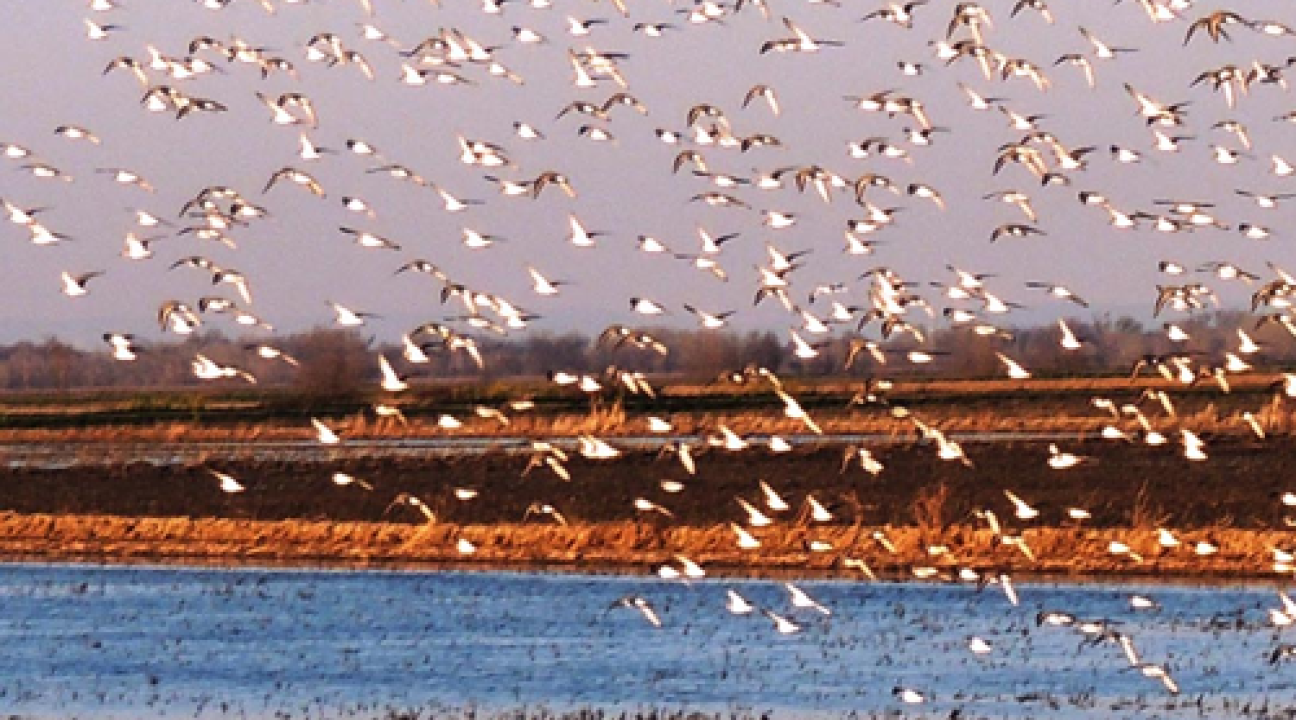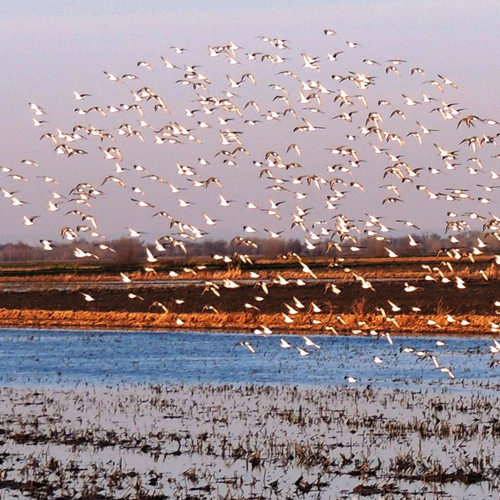Laney: Analyzing the cost-effectiveness of delivering wildlife habitat on ag lands
Laney, R., 2023. Delivering wildlife habitat on productive agricultural lands cost-effectively: The case of migratory shorebirds on California rice lands. Conservation Science and Practice, p.e12955. https://doi.org/10.1111/csp2.12955
Promoting wildlife habitat on working agricultural land is a growing conservation priority, and agri‐environment schemes are using payments for environmental services (PES) to reach these privately owned lands. PES can be ecologically effective, but also expensive, putting pressure on these schemes to be cost‐effective, maximizing the conservation value of their limited resources. This study assesses the cost‐effectiveness of four PES schemes in California that paid rice growers to provide temporary flood habitat on their working lands in support of shorebirds. It examines whether the schemes (1) paid for flood habitat only when needed (targeting); (2) paid for habitat that was actually delivered and would not otherwise be provided (additionality); (3) sacrificed as little habitat as possible when the habitat competed with production (ag/wildlife balance); and (4) fostered a commitment among growers to maintain the habitat after payments ended (permanence). Results show that the schemes fell short in each of the four goals, and they expose several factors that undermined their cost‐effectiveness. First, variable weather patterns altered the date in which the shorebird‐habitat gap emerged year‐to‐year, creating a dynamic and unpredictable target for the schemes to address. Second, growers' views on the compatibility of the flood habitat with their rice production varied widely and changed rapidly as the agricultural calendar progressed, making it a challenge to mitigate potential ag/wildlife conflicts. Third, water for flood habitat is expensive, and growers proved unwilling to shoulder that expense once payments ended. These results highlight the need for schemes to adopt design elements that can add flexibility, such as cancelation clauses, so that they can adjust to dynamic targets and adapt to changing ag/wildlife relationships. Results also suggest that PES schemes operating on working lands may require long‐term external support. That finding amplifies the imperative that schemes use their conservation resources cost‐effectively.



